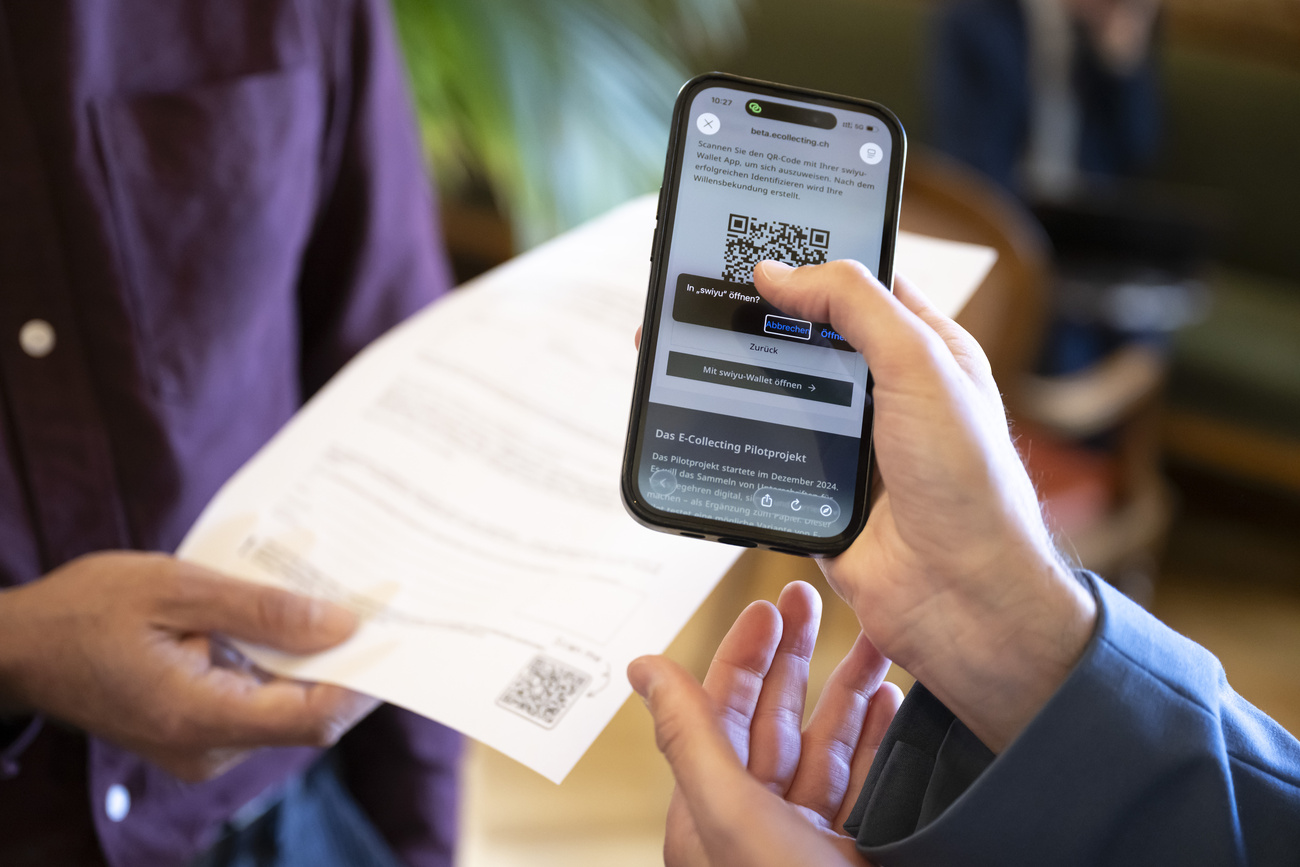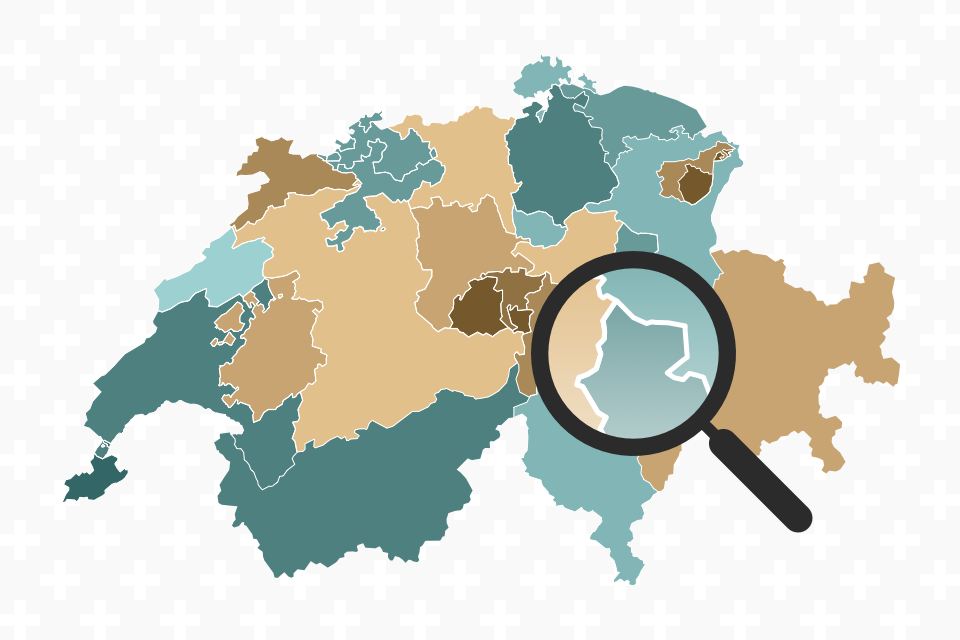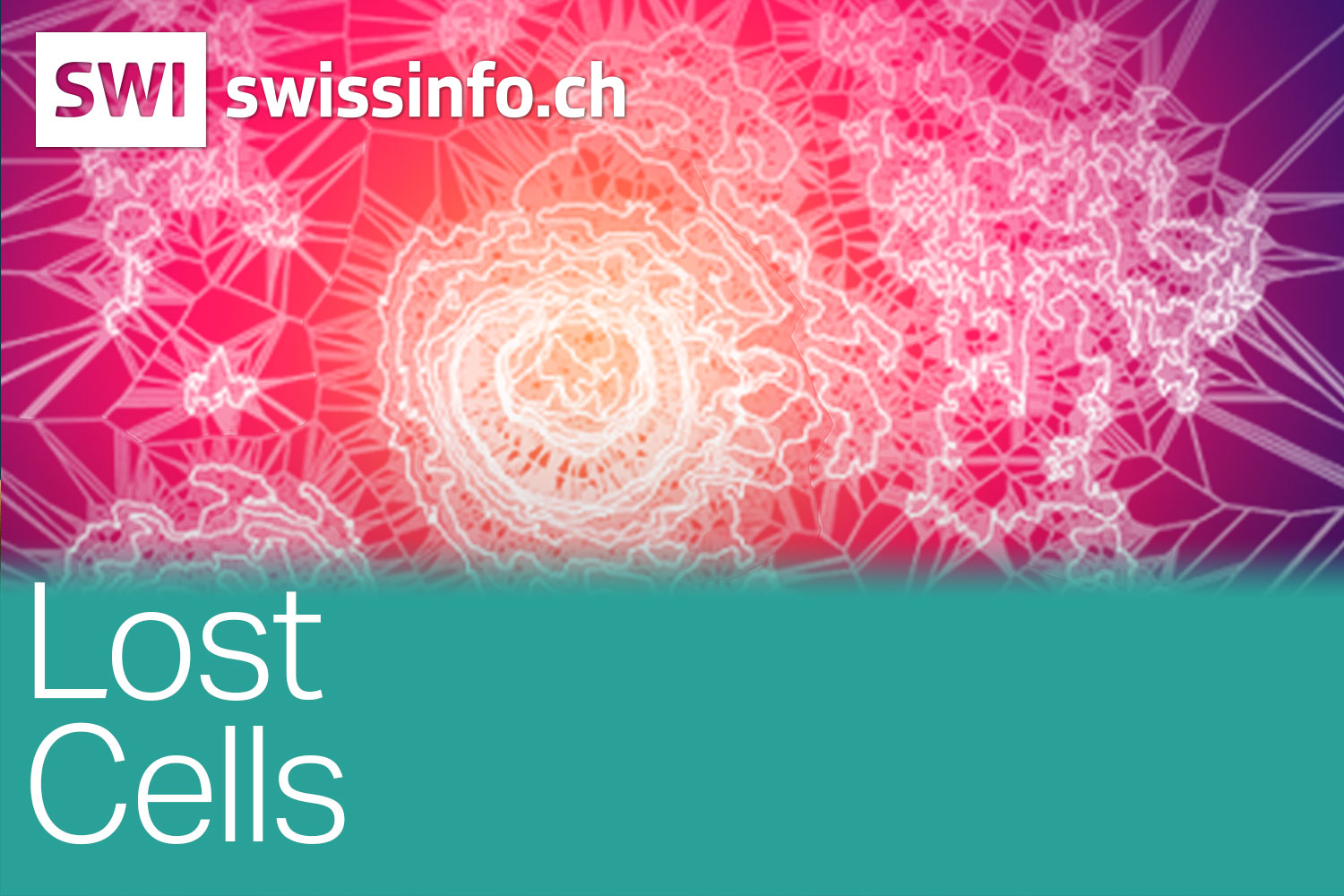
“Aunt Annie” brings English to life

Third graders in the village of Oberdorf, canton Nidwalden, are busily working on their English flashcards when there’s a knock at the door.
It’s a woman with a suitcase, and she seems a little confused. She says she’s looking for a Mrs So-and-so, but decides to linger when she finds that the children and their teacher can speak English.
She introduces herself as Aunt Annie, an American who is visiting Switzerland. The children’s shyness slowly turns into excitement at the novelty of having an unexpected visitor in the classroom.
“Ooohh!” they exclaim when Aunt Annie opens her suitcase to reveal a menagerie of stuffed animals. It’s time for a game. The cheerful woman has the children sit in a circle and asks one to close his eyes.
Aunt Annie places a plush toy in his hands; his task is to feel the animal and comment on its features.
“It has two ears, two eyes … four feet. Hmmm,” he says. Aunt Annie encourages the other children to help him out.
“It’s brown!” calls out one. “It’s big!” adds another. “Is it a bear?” he guesses, the pronunciation veering closer to “beer”. No problem for Aunt Annie, who simply enunciates the proper way to say it: “That’s right, it’s a bear. Very good! Who’s next?”
Immersion learning
In fact there are eight “Aunt Annies” circulating around German-speaking Switzerland; four are American, two are Canadian and two are British. All are native English speakers who have experienced the challenges of learning a second language.
Typically, the first visit takes place in the third grade. Aunt Annie drops in three times per year for up to four years, so there is plenty of time to develop a relationship.
“The pupils had had only a few months of English when she came the first time and they were looking at me and wondering ‘What should I do? What should I say?’” recalled teacher Tanja Barmettler, whose students are now fourth graders.
“But as they really get to like Aunt Annie it’s easier for them to talk and after the first few visits it’s no problem anymore. They just have fun talking to her. It doesn’t matter if the sentence isn’t totally perfect because Aunt Annie understands,” Barmettler told swissinfo.ch.
Comprehension and speaking are the two main thrusts of the programme, according to co-founder Sharon Kroska. The Aunt Annie character doesn’t speak or understand German, so the children are gently forced to communicate in English.
“The easiest way to learn a language is to go to a foreign country, but it would be impossible to take a whole class abroad – especially at that age. What we do is bring the foreign country to the classroom, and the kids are motivated to learn English because the reason is now tangible,” explained Kroska to swissinfo.ch.
Very rewarding
Kroska and her colleague Markus Schulthess developed Aunt Annie in 2005. They started with three classes in central Switzerland; today there are 111 classes scattered from Lucerne to Saint Gallen.
“It’s grown by leaps and bounds and it’s a wonderful feeling for us because the idea is so simple but so effective. The children embrace the challenge. It’s just great that teachers are taking the opportunity,” said Kroska, who hopes to expand into French-speaking Switzerland, where English is taught as a second foreign language as of fifth grade.
The topics and activities reflect the age of the children as well as what they are learning during their regular English lessons. For example, the younger ones focus on animals, colours and food, while the older ones get into more challenging topics like art and the environment.
According to Kroska, the teachers are often surprised by how much English their pupils can speak. For them it is an interesting chance to observe their students and gauge their ability.
“At the beginning of the visit, the kids are quiet, but by the end of the visit they are pushing forward to be the first to speak. They’ve discovered their own English voice, and that is a fabulous moment,” Kroska said.
“Sometimes I’m not sure who benefits more from this – the kids or Aunt Annie. But for me it’s a very rewarding job.”
Through postcards and letters, the school classes keep in touch with Aunt Annie between visits. In fact, Aunt Annie tends to receive a lot of fan mail as well as drawings by the children.
More than English
What is also interesting about the Aunt Annie experience is how it influences the classroom dynamics.
“The great thing about the visit is that the kids are all in the same boat – they’re all confronted with Aunt Annie and have to help her out. It kind of unifies them as a class,” Kroska noted.
Meanwhile, the visits also give the non-native German speakers a chance to shine. As Kroska points out, those students have already gone through the difficult process of having to speak a foreign language.
“They are some of the first to speak to Aunt Annie when she enters the classroom. There’s an evident shift in the dynamics – you can see some of the kids looking at these students who don’t speak German as a first language and thinking, ‘Oh my gosh, you know the answer!’” said Kroska.
As the end of the third grade English lesson draws near, Aunt Annie announces that there’s still time for one last song. They settle on “Dry Bones” – perfect for reviewing body part vocabulary while getting a little exercise.
She leaves the students with a stack of children’s English books and asks if she can visit again sometime. The answer is unanimous: “Yes!”
The Aunt Annie project is based on the ALE Method®, which was created by Sharon Kroska and Markus Schulthess.
ALE stands for Authentic Learning Experience, a teaching method that allows pupils to learn and practise English in an authentic setting.
Aunt Annie is neither a clown nor a teacher; she is simply a visitor who helps motivate the children to converse in English.
Currently there are 8 Aunt Annies serving 111 classes in German-speaking Switzerland.
There are no men in the role, but in theory, an Uncle Edgar could join the team.
Kroska is a translator from the United States; Schulthess is from Switzerland and a co-founder of an internet agency in Lucerne. They share office space in Lucerne, which is where they came up with the Aunt Annie idea.
The Aunt Annie project is made possible by donations as well as sponsorship by the cantonal banks in central Switzerland.
An annual “subscription”, which includes three classroom visits, costs SFr870 ($900). Until now, only one local canton has helped offset the fee.
A small local bookstore kindly donated the 1,000 books in Aunt Annie’s lending library.

In compliance with the JTI standards
More: SWI swissinfo.ch certified by the Journalism Trust Initiative





































You can find an overview of ongoing debates with our journalists here . Please join us!
If you want to start a conversation about a topic raised in this article or want to report factual errors, email us at english@swissinfo.ch.